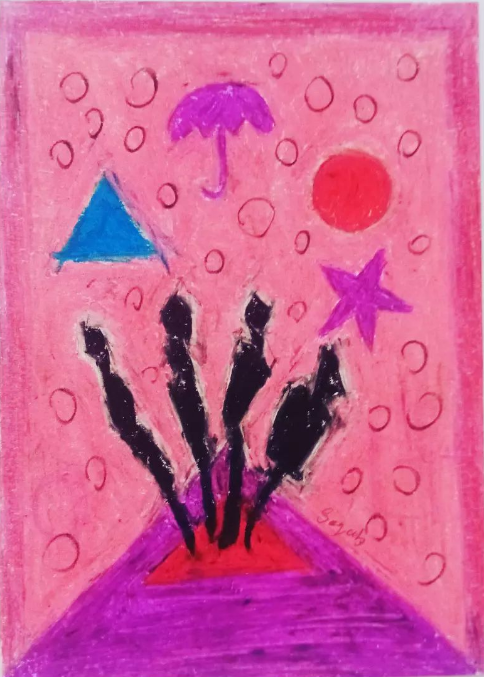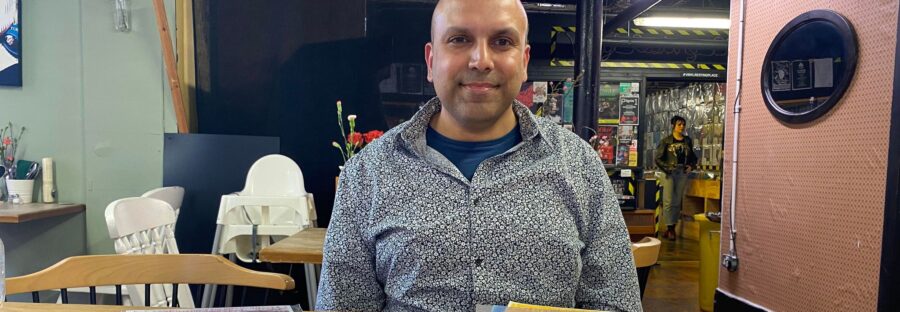Burnage Artist And Mental Health Professional Explores How Business And Fulfilment Relate
Born in Burnage, Saqab Ahmad has been exploring his relationship with art since he was a child. From drawing comic book characters for his childhood friend to developing an art style unique to his brand, Saqab believes that everyone is inherently creative. The challenge lies in expressing this creativity in the modern age.
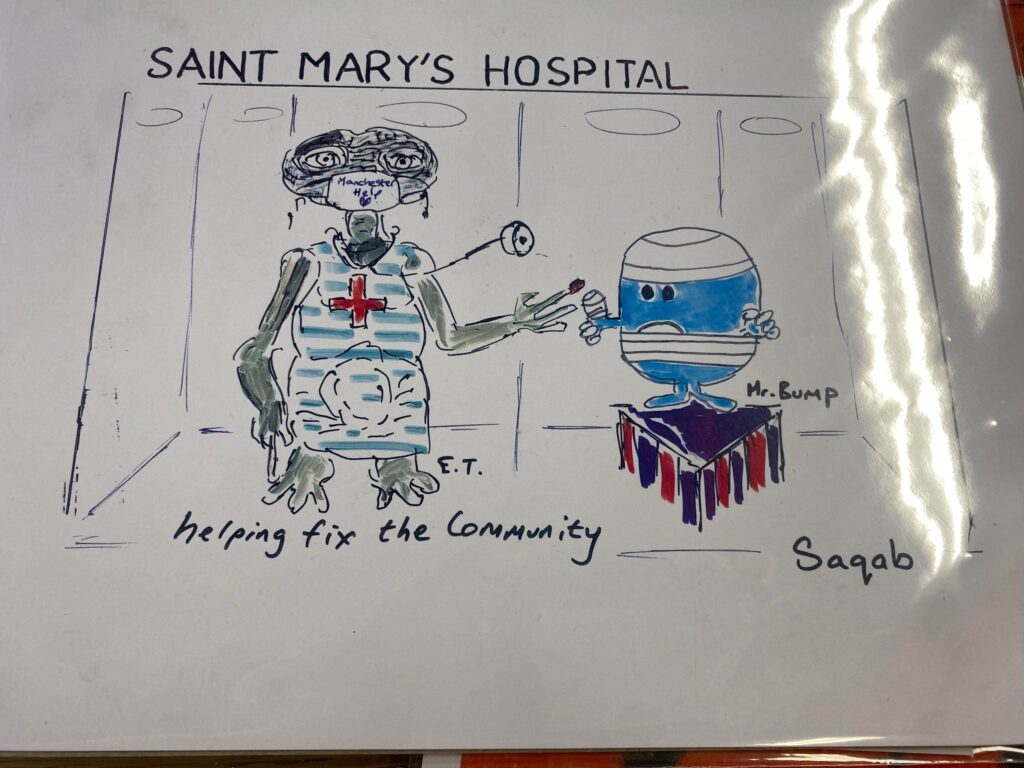
Reflecting on his early years, Saqab recalls, ‘I think I’ve always been creative, because in primary school I used to draw a lot of jimbo posters for the other kids’
Growing up in the West with parents from Pakistan, Saqab offers a unique perspective, shaped by the blend of Eastern and Western influences. Discussing how Burnage has influenced his art, Saqab said: ”As a child I was not taking as much notice as I should of my surroundings. I was pretty much in my own world. I think a lot of the stuff that comes into my art is through feelings that I’m experience inside, and what I’m experiencing with people. I’d say it’s more people related than surrounding-based.’
‘In everyday life I’ll look at things in a more obscure way. I like to see what others peoples opinions are and not just dismiss people because I disagree with them.’
During lockdown, Saqab took an Art Marketing course to understand how to sustain a fulfilling creative life. He learned that people often want to know the story behind the art. ‘People like to know why you do your art, or what the meaning is behind it. It’s not enough to let the art speaks to itself. And I kind of relate to that- because if I go into a gallery and its just a persons name and the date they’ve done it I’m always curious to know ‘What made you do that?”
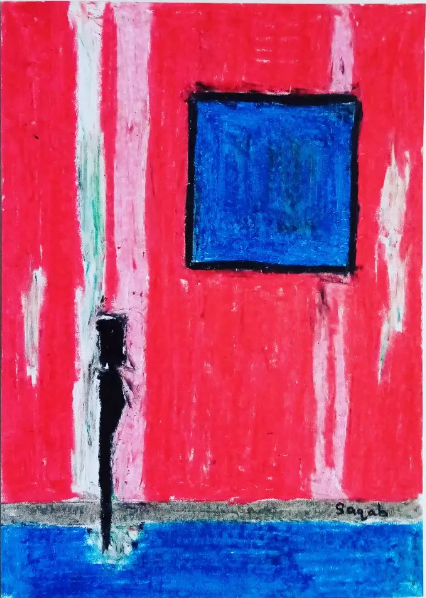
‘This was actually inspired by someone who I worked with at the Mental Health Project, and her favourite saying was always ‘you need to think outside the box’ which is important for both mental health and creativity.’
Working in the mental health industry for 18 years, Saqab said he seeks fulfilment in his work, aiming to think creatively about how to maintain a lifestyle and create art.
‘I was creative before I went into mental health, however I feel my creativity helps in mental health as sometimes things don’t work with a certain client, and you have to try something different to what’s in the rules. Obviously you have to stick to your policies and procedures, but then you come up with an idea you feel proud of. This will fit into place, and this will work better for that person.’
‘I say I’m a realist, I’m not naïve to how the real world is, but I always try and stay positive. And I think, if you’ve got positive energy, you’re more likely to succeed. There are days you’re going to be sad, where you’re not in a great mood, but that’s being human. It’s about thinking: you’ll come out of that, and try to think about life in a positive light. Then even the negative things that happen will provide meaning that can push us forward.
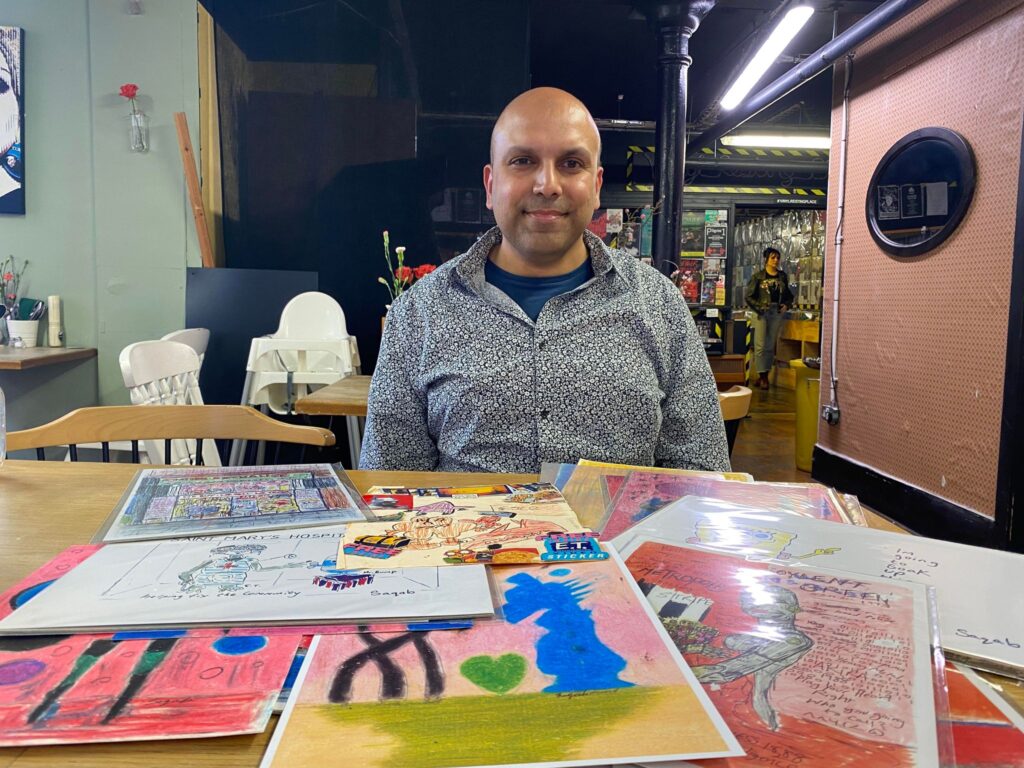
Saqab addresses the common fear of the “starving artist” and the self-doubt that can hinder pursuing one’s dreams. “In mental health, I wasn’t 100% sure if I was going to be good at it. But 18 years down the line, I’m still doing it and seeing the benefits for all the people succeeding. On a personal level, it’s rewarding to know that.”
‘I think that’s how I’ve always looked it. It helps me working in mental health, I’ve got to think that, even though this person is not in a good place right now, in my mind I believe that this person will get out of this.
